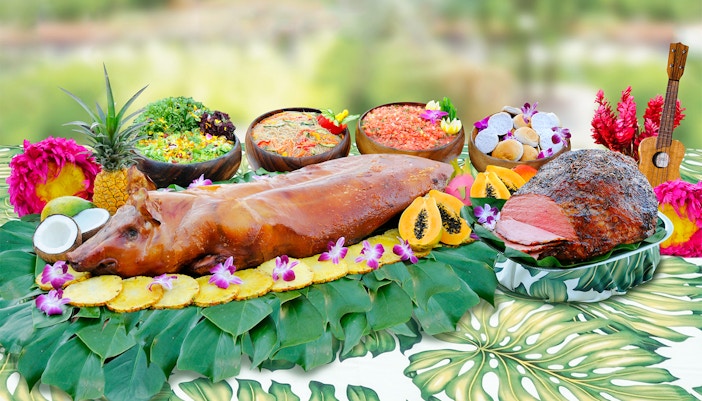Luau music and the melodic art of storytelling
Luau music & songs | An overview
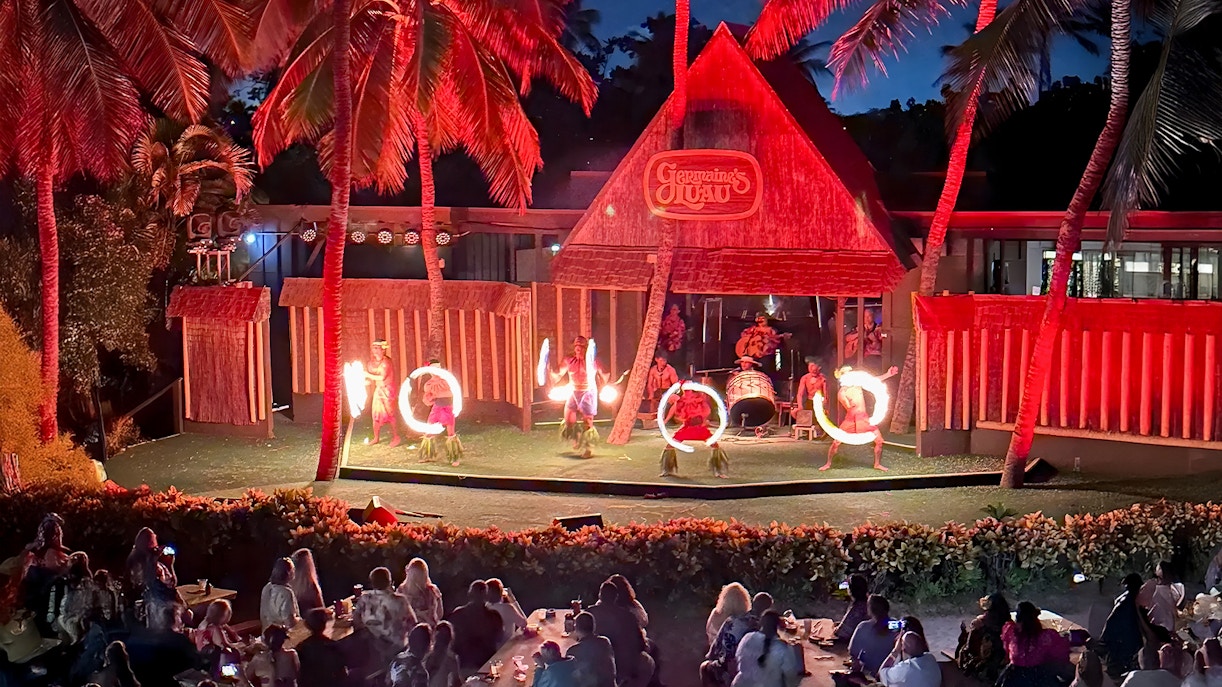
- Traditional luaus had live music, chanting, and songs that were performed throughout the feast as a means of narration and live storytelling.
- Live music was accompanied by hula dancing and other performances for the duration of the luau.
- Today, luau music continues to be a part of the celebrations, providing a closer look into the cultural practices along with live entertainment for the guests.
Luau music | Traditional & modern music instruments
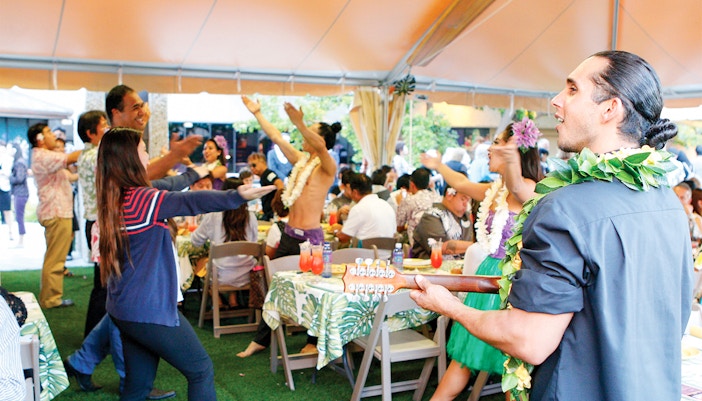
Ukulele
The ukulele is one of the most iconic instruments you’ll find at a Hawaiian luau. Its bright, cheerful tones create an inviting atmosphere that instantly brings a sense of Aloha. Often played alongside singing and hula dancing, ukulele music immediately sets the festive mood at the luau.
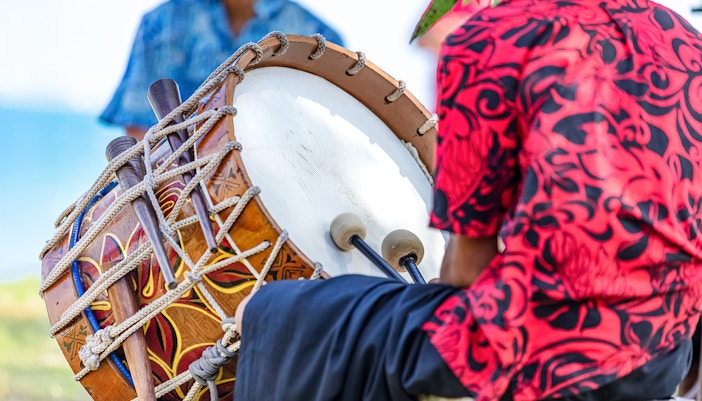
Pahu
The pahu drum is a traditional Hawaiian instrument carved from coconut or breadfruit tree trunks and topped with sharkskin. Its deep, resonant beats guide chants and dances during a luau. The pahu also carries spiritual meaning since it was once used in temples and during sacred ceremonies.
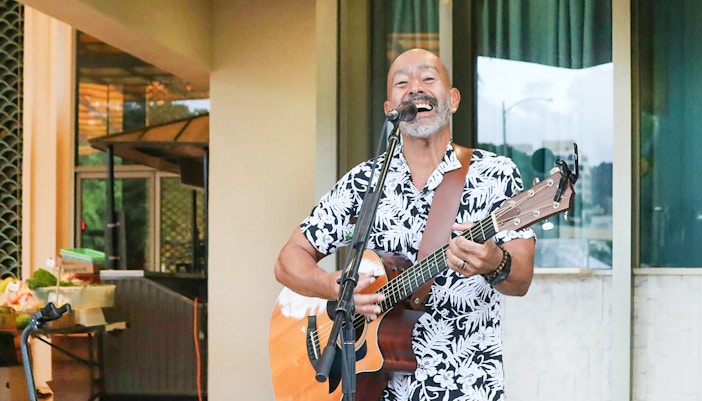
Slack-key guitar
Slack-key guitar, or kī hōʻalu, is a fingerstyle guitar playing technique unique to Hawaii. By loosening guitar strings, performers create a deep, flowing sound that is quintessential Hawaii.
What accompanies the luau music
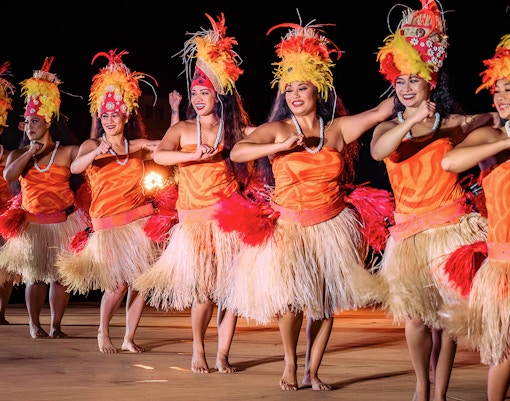
Hula dancing
Hula is the heart of Hawaiian storytelling at a luau. Every hand gesture, step, and sway of the hips conveys meaning and is usually followed by chants, songs, and instruments. Through hula dancing, performers share legends, history, and emotions, turning music into a living cultural expression.
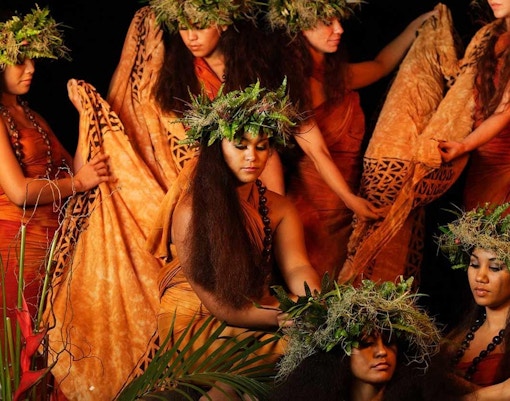
Oli (chants)
Oli (chanting) is one of Hawaii’s oldest forms of expression. The chants were used to honor chiefs, recount stories, or call upon the gods. At a luau, oli chanting links the visitors to the past and the present.
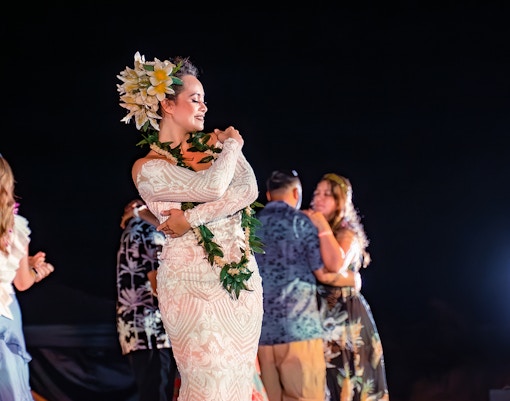
Traditional songs
Traditional Hawaiian songs bring warmth and nostalgia to the luau. They are based on love, nature, and family. Accompanied by ukulele or guitar, these melodies invite guests to feel the Aloha spirit through music and lyrics.
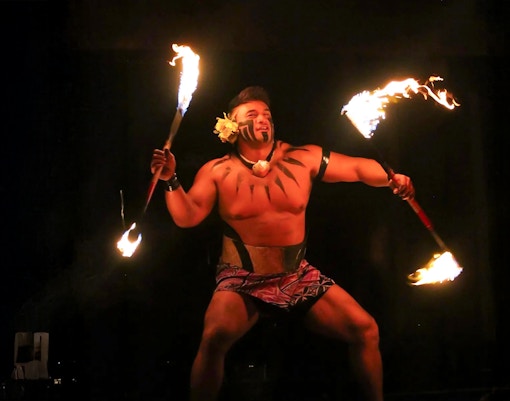
Polynesian dances (fire-knife and ʻoteʻa)
Polynesian dances add excitement to a luau. It’s hard to keep your eyes away from the Samoan fire-knife dance’s flaming blades, while the Tahitian ʻoteʻa’s fast hip-shaking movements set to drums create a vibrant, unparalleled energy in the audience. These performances showcase the diversity of Polynesian cultures that have influenced Hawaiian luaus over time.
Book Hawaii luau tickets
Frequently asked questions about luau music
Not always, many luaus blend traditional Hawaiian songs with contemporary island music. This balance ensures guests enjoy both the authenticity of heritage and the fun, modern energy of Hawaii.
Music sets the tone for the entire celebration at the luau, guiding the flow of dance, storytelling, and performances.
Yes, many luaus invite guests to join in simple dances or offer hula lessons. You can also clap to rhythms or sing along. This way, you can feel like you are a part of the cultural celebration.
Non-luau Hawaiian music can range from modern island reggae to contemporary pop. Luau music, however, emphasizes traditional instruments, chants, and songs designed to highlight cultural roots and communal celebration.
Many traditional Hawaiian instruments, like the pahu drum, are still crafted by hand using natural materials. This practice keeps alive the traditional methods passed down through generations.

